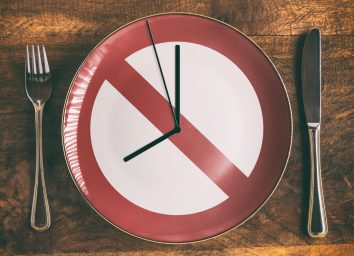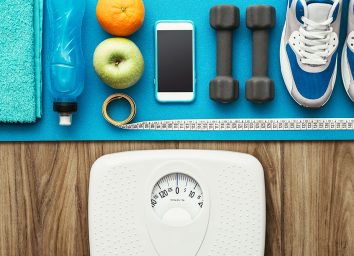Fat-Burning Foods to Put In Your Overnight Oats
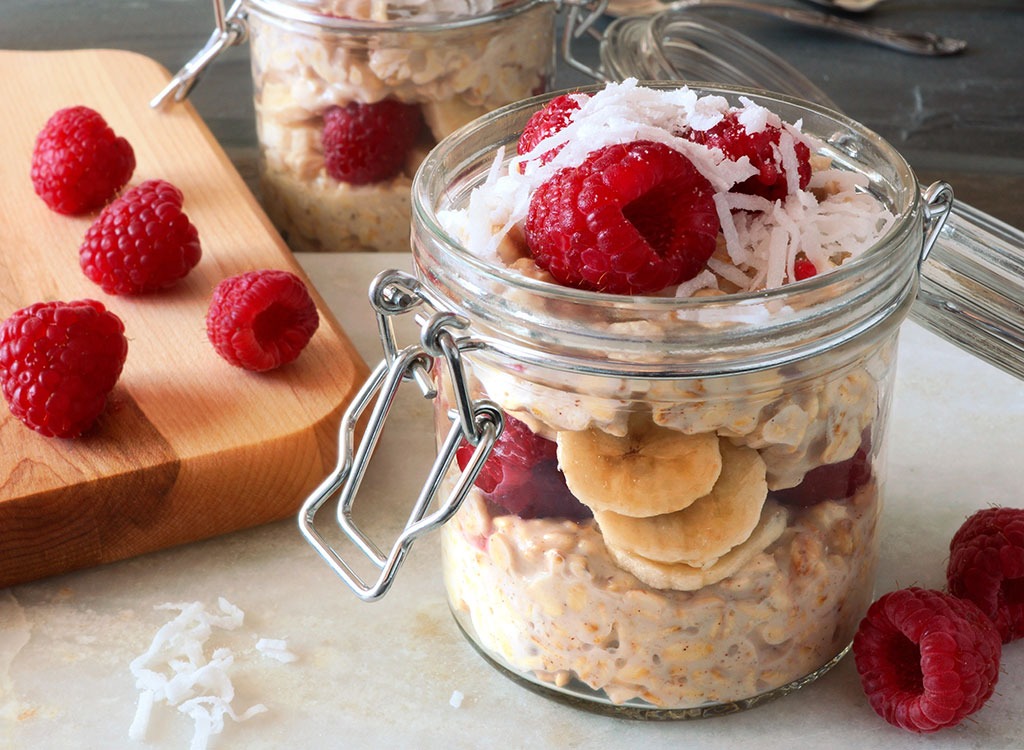
What makes it such a nutritional superhero? Unlike most cold cereals, it’s packed with insoluble fiber and whole grains, which lowers levels of ghrelin—a hormone that boosts hunger—and fights belly fat, making it a must-eat for anyone who is trying to lose weight. But why settle for a plain bowl of overnight oats when you can sprinkle delicious toppings on your cereal that make its waist-shrinking effects all the more powerful? Passing up the opportunity to eat two fat-fighting foods at once—before you’ve had your morning coffee, no less—is like having Superman come to your rescue with Batman and asking one of them to take a hike.
All of the toppings below taste great with oatmeal and have been shown to aid weight loss. Simply place your topping of choice in a Tupperware container along with slow-cooking oatmeal, milk or water, seal it up and throw it in the refrigerator overnight. While you’re sleeping, the flavors fuse together so all you have to do is scarf it down next morning and watch your belly fat melt away!
CHIA SEEDS
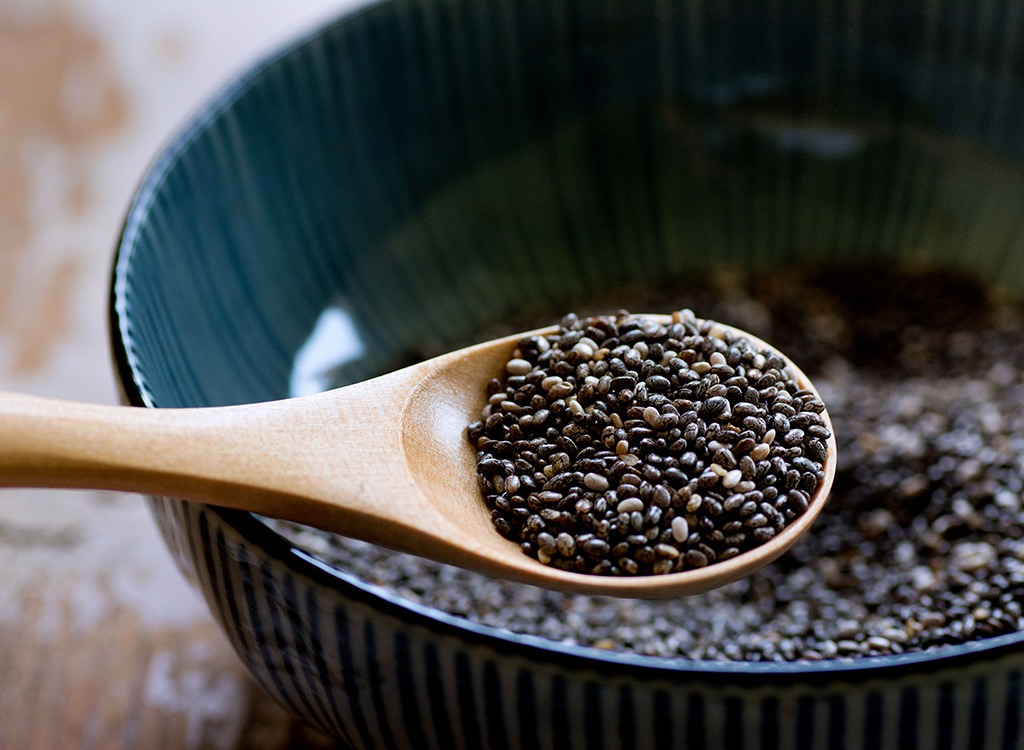
Nutrition, per tablespoon: 60 calories, 4.3 g fat, 0.4 g saturated fat, 2 mg sodium, 6 g carbs, 5 g fiber, 0 g sugar, 2.3 g protein
Chia seeds are all the rage right now, popping up everywhere from drinks to nutrition bars, and it’s easy to see why: They’re mild tasting, low in calories and filled to the brim with heart-healthy omega-3 fatty acids, hunger-busting fiber and protein — a nutrient that can give you that lean look you crave. What’s more, when you ingest chia seeds, they form a gel in your stomach that curbs appetite by slowing down the digestive process. Buy a pack of the seeds and add them to your oats to reap the benefits.
UNDERRIPE BANANAS
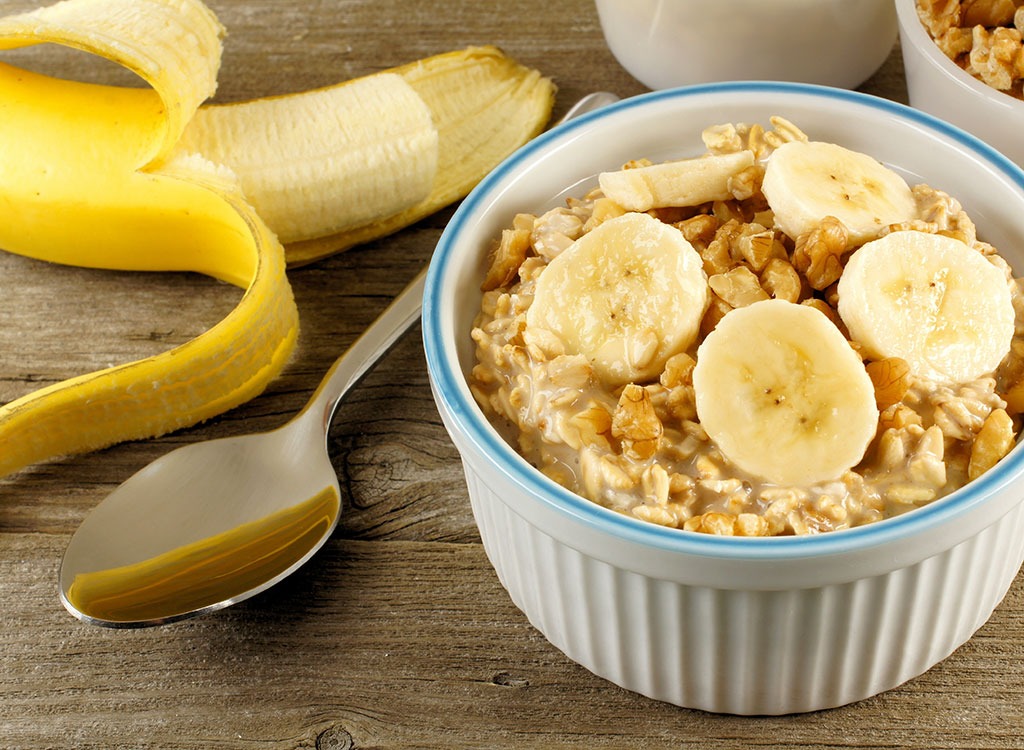
Nutrition, 1 small fruit: 90 calories, 0.3 g fat, 0.1 g saturated fat, 1 mg sodium, 23 g carbs, 2.6 g fiber, 12 g sugar, 1.1 g protein
Grab a slightly green banana, slice it up and add it to your oats with a pinch of brown sugar and a drizzle of honey. These additional add-ins will offset the fruit’s slightly bitter taste, which, thanks to its health benefits, is well worth stomaching. Underripe bananas are rich in something called resistant starch, a type of starch that passes through the small intestine without being digested. This feeds healthy gut bacteria, leading to prolonged feelings of fullness and more efficient fat oxidation. What’s more, just one small banana serves up 20 percent of the day’s vitamin B6, a vital nutrient that helps convert food into energy.
WALNUTS

Nutrition, 3 tablespoons (1.5 oz), chopped: 143 calories, 14 g fat, 1.3 g saturated fat, 0 mg sodium, 3 g carbs, 1.5 g fiber, 0.5 g sugar, 3.3 g protein,
While saturated fats, like the kind you’ll find in red meat, “turn on” belly fat genes, polyunsaturated fats, which are naturally present in walnuts, activate genes that reduce fat storage and improve insulin metabolism. Three tablespoons of the chopped, crunchy nuts serve up 10 grams of the stuff, making them one of the best dietary sources of the nutrient. Walnuts are also brimming with antioxidants and omega-3 fatty acids that can significantly reduce the risk of heart attack and stroke. The most comprehensive review of clinical trials on nut consumption in relation to cardiovascular disease showed consuming just one ounce of walnuts five or more times a week can slash heart disease risk by nearly 40 percent—sounds like a good reason to add them to your oats to us!
PINK LADY APPLES
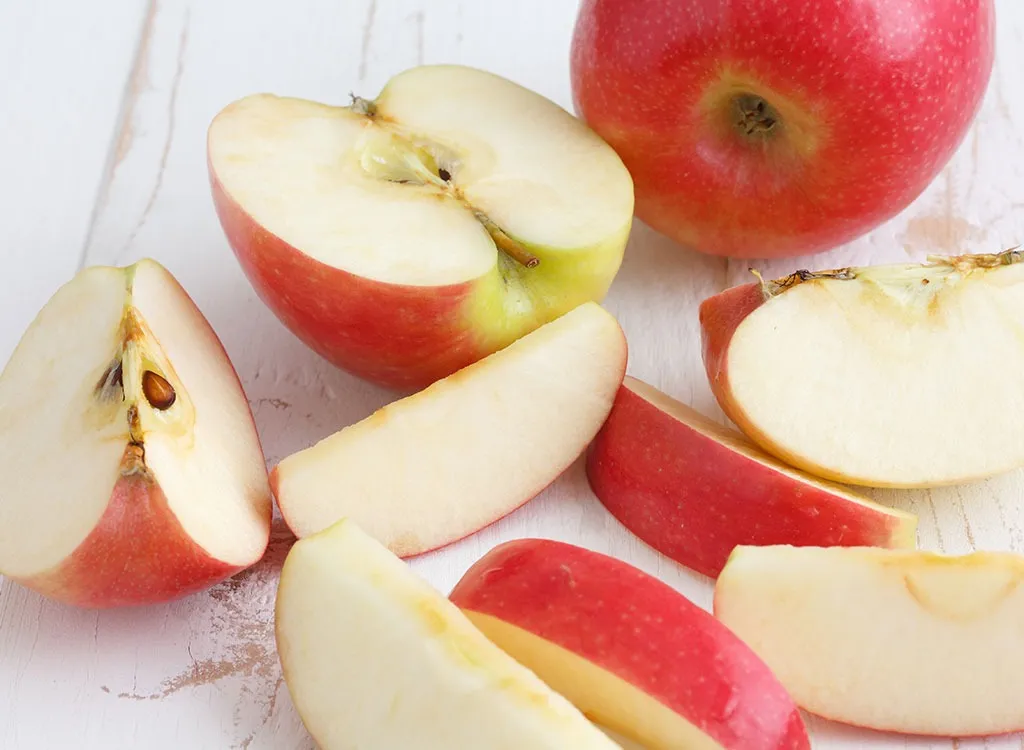
Nutrition, 1 medium fruit: 72 calories, 0.2 g fat, 0 g saturated fat, 19 g carbs, 3.3 g fiber, 14.3 g sugar, 0 g protein
Love apple pie? Infuse your overnight oats with a similar taste by topping your cereal with chopped pink lady apples and cinnamon. Pink Lady apples are one of the best fruit sources of fiber, a nutrient proven to be integral to reducing belly fat. In fact, one pool of researchers found that for every 10-gram increase of soluble fiber eaten per day, study participants shed 3.7 percent of visceral fat over five years. Why cinnamon? Besides its integral role in your pie-flavored breakfast, the spice contains powerful antioxidants called polyphenols that are proven to improve insulin sensitivity and, in turn, our body’s ability to store fat and manage hunger cues.
SWEET POTATOES
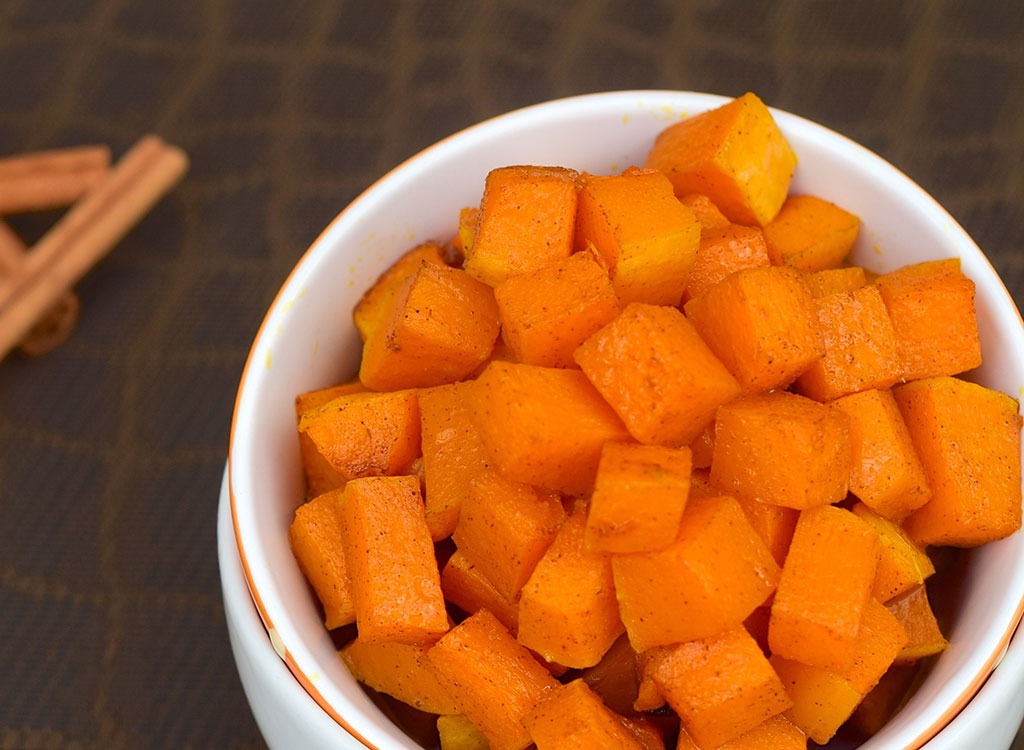
Nutrition, ½ cup: 57 calories, 0 g fat, 0 g saturated fat, 37 mg sodium,13.5 g carbs, 2 g fiber, 3 g sugar, 1 g protein
While putting sweet potatoes in your oatmeal may sound a bit strange, hear us out! They actually taste great paired with oats, and thanks to their high fiber content and low glycemic index, they’re a powerful satiety-boosters. They’re also rich in carotenoids, antioxidants that help stabilize blood sugar levels and lower insulin resistance, which prevents calories from being converted into fat. Add a half-cup of a cooked sweet potato to your oats along with two teaspoons of brown sugar and pumpkin pie spice, a drizzle of maple syrup and walnuts. And if you’re looking for more ways to add veggies to your morning meal consider whipping up some zoats (zucchini oatmeal).
ALMOND BUTTER
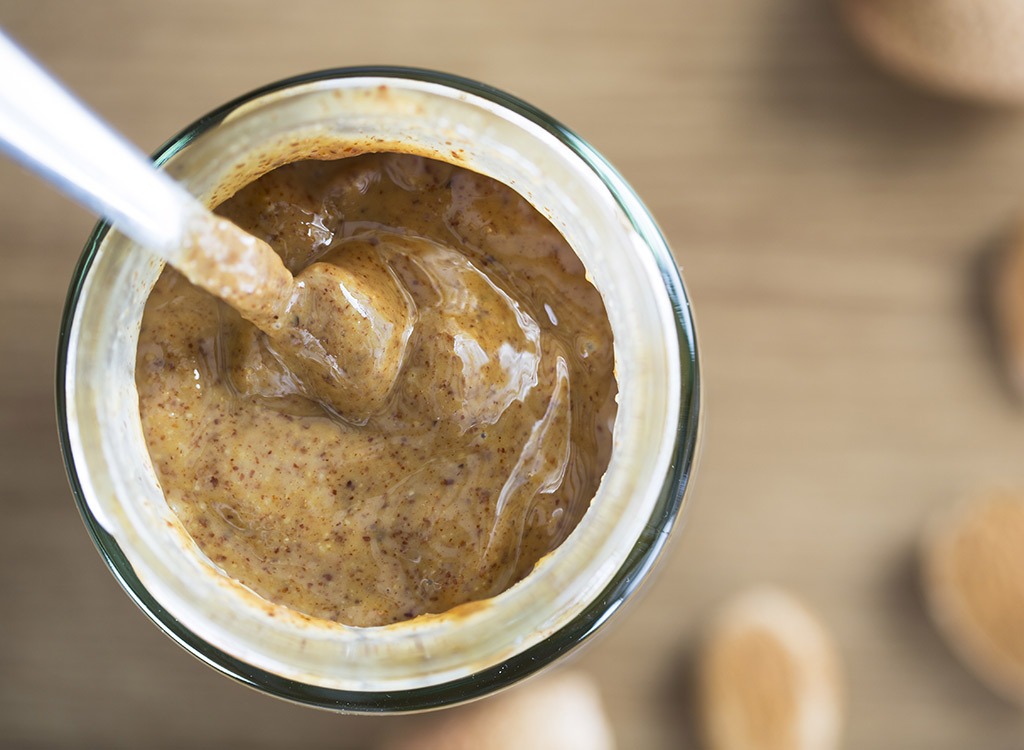
Nutrition, per tablespoon: 98 calories, 8.8 g fat, 0.6 g saturated fat, 1 mg sodium, 3 g carbs, 1.6 g fiber, 0.71 g sugar, 3.35 g sugar
Thanks to a naturally occurring compound that limits the amount of fat absorbed by the body, almonds and their creamy butter pack a serious fat-burning punch. In fact, the study found that eating just 1.5 ounces of almonds daily led to a reduction in belly and leg fat. Reap the benefits by topping your oats with almond butter, cinnamon and vanilla extract. The trio of sweet and savory flavors is sure to tantalize your taste buds.
BERRIES
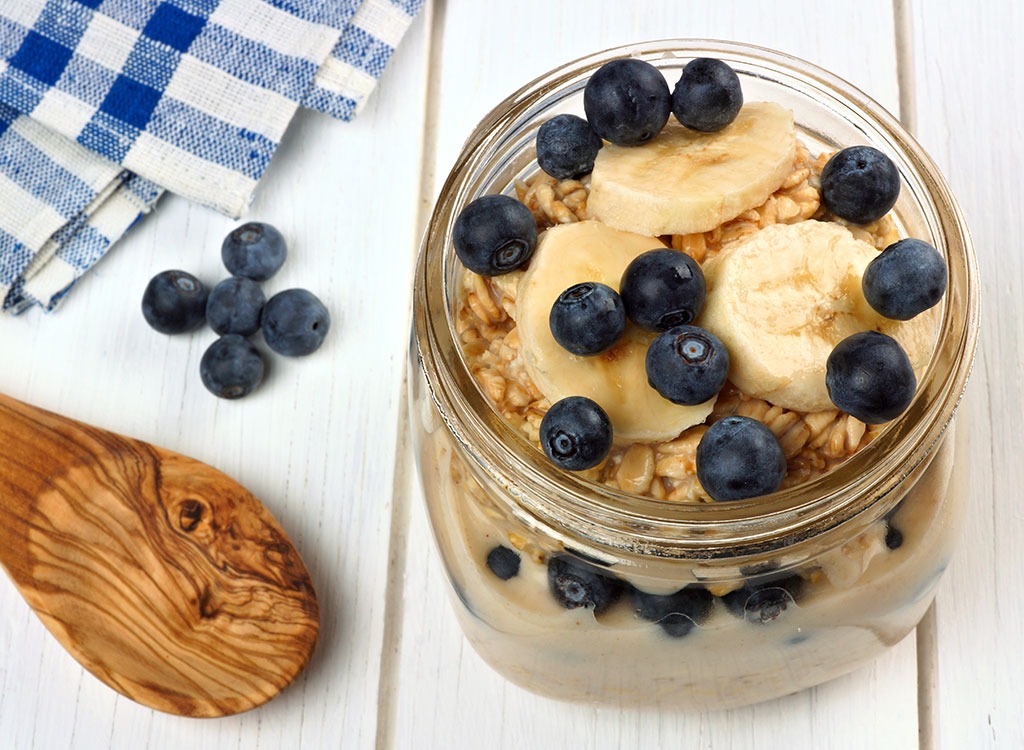
Nutrition, 1/2 cup: 24-42 calories, 0 g fat, 0 g saturated fat, 0-1 mg sodium, 6-10.5 g carbs, 1.5-4 g fiber, 3.5-7.5 g sugar, 0.5-1 g protein
Due to their high concentration of water, fiber and polyphenols (micronutrients that can help you burn fat and prevent it from forming), berries are among some of the best fruits for fat loss. In fact, in one animal study, mice that ate three daily servings of berries had 73 percent fewer fat cells than mice who weren’t fed the fruit. If you’re put off by the typically high price of berries, head to the freezer aisle. Frozen berries contain the same amount of nutrients as the fresh variety, and can easily be added to your mason jar oatmeal. Blueberries pair nicely with cinnamon and nutmeg, or try mixing strawberries and blueberries with vanilla extract, cinnamon, and almonds.
